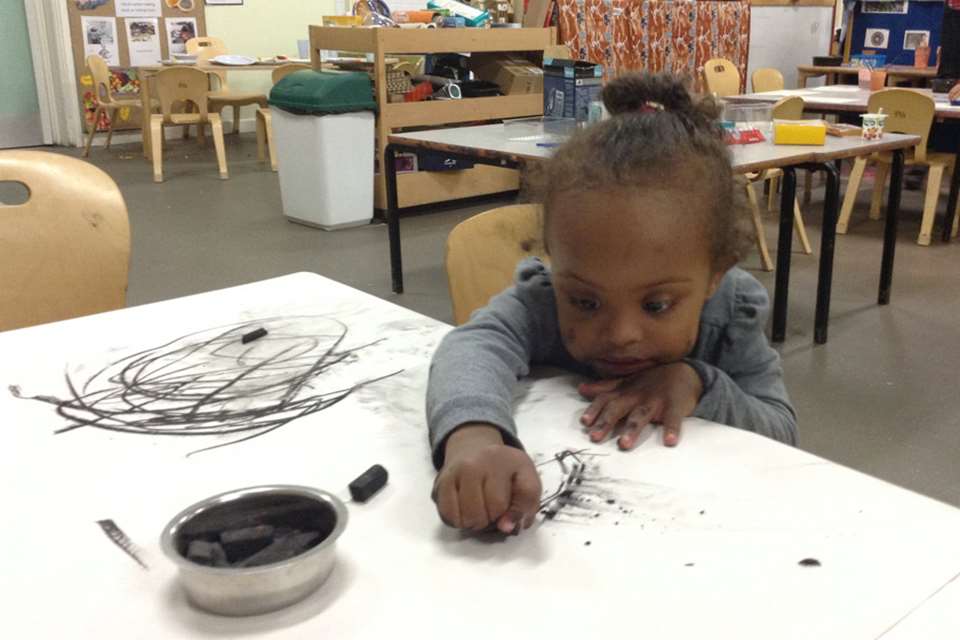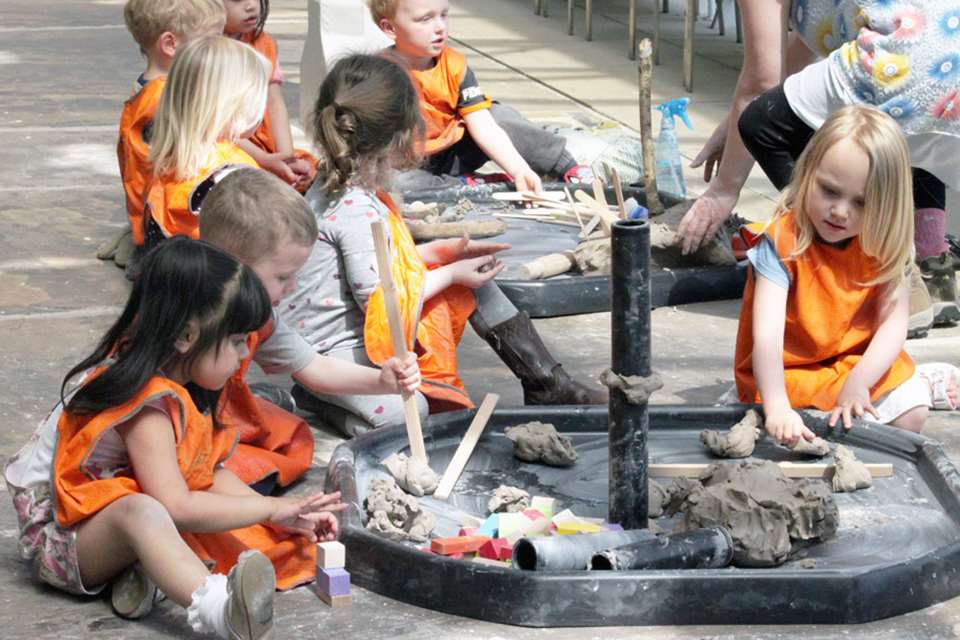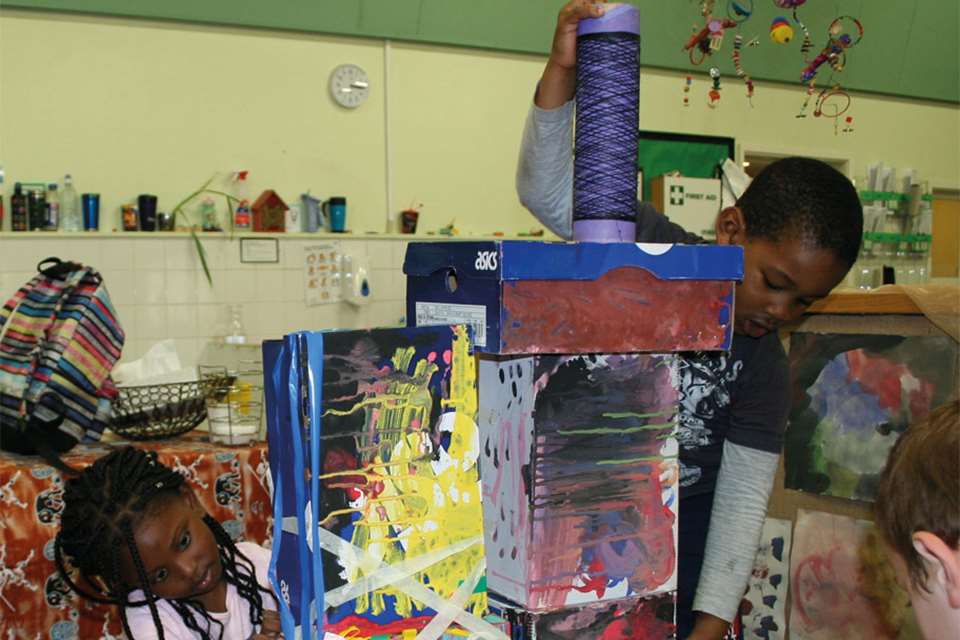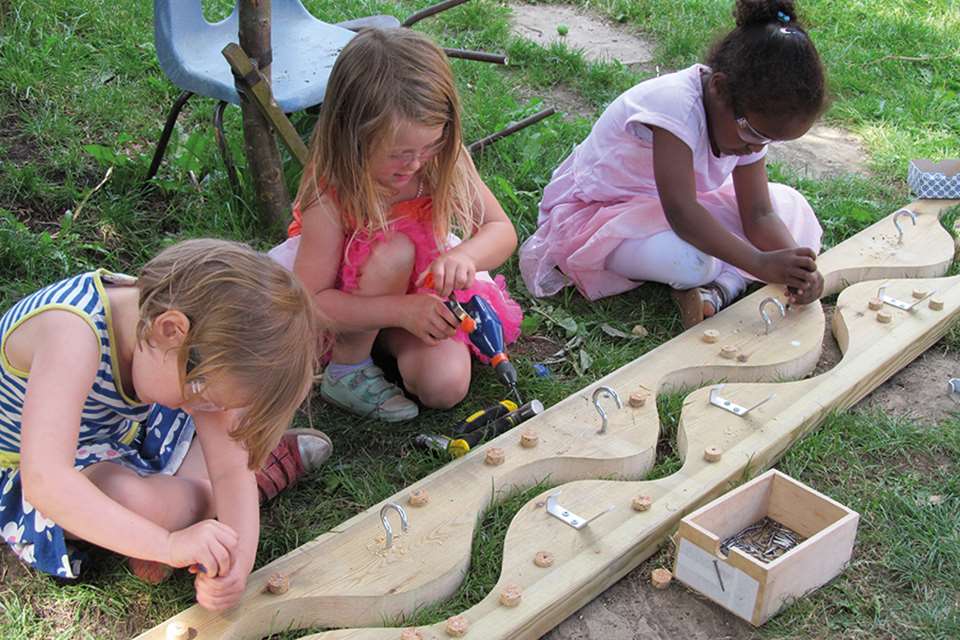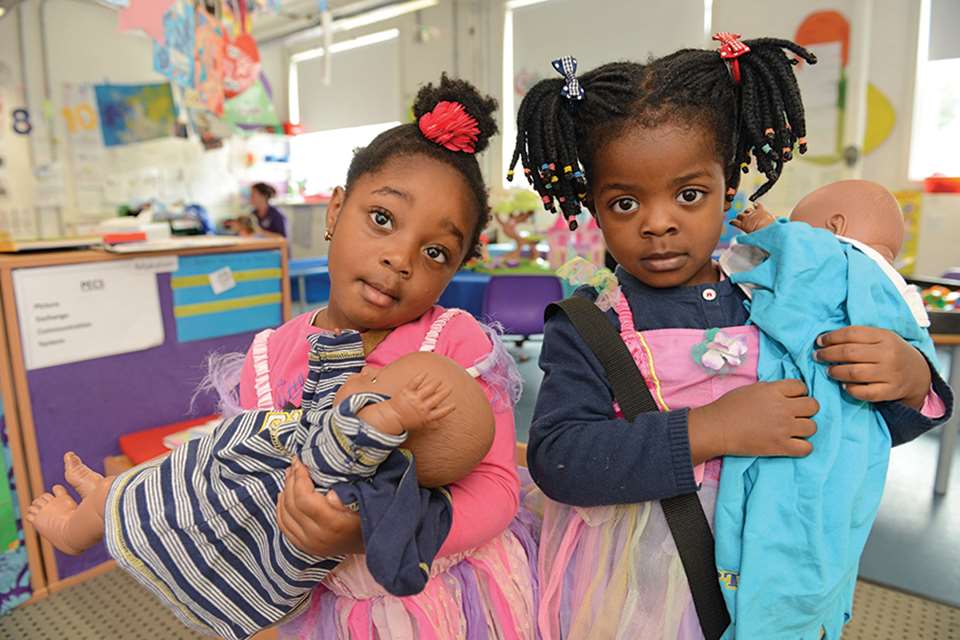Enabling Environments: Collections - Shop around
Nicole Weinstein
Monday, December 12, 2016
Pretend shops are a magnet for young children – and the role play can be meaningful too, explains Nicole Weinstein, who also provides some useful resourcing pointers

Children love to play in pretend shops. Whether they are pushing around a shopping trolley and selecting groceries from the supermarket, behind the counter serving ice creams to happy holidaymakers, or simply organising the boxes and the produce before hanging out the ‘Open’ sign, shopping is an activity that quickly captures children’s imaginations.
Not only is this form of role play good for language skills and problem-solving, but it also provides countless opportunities to cover maths.
To support this area of play, practitioners should provide a well-equipped home corner and outdoor area containing resources that children can use to set up shop.
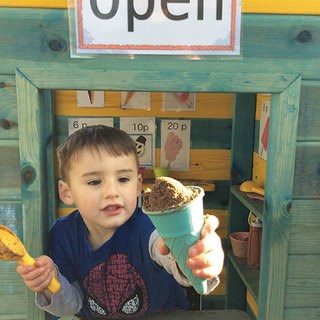
MEANINGFUL ROLE PLAY
It is important to provide a variety of shopping experiences based on the children’s experiences and interests.
‘Making it meaningful and relevant will enhance the learning potential,’ explains Caroline Eaton, early years consultant and author of Enabling Environments on a Shoestring.
‘For example, so much shopping is now done online that perhaps some children do not get to go to the shops regularly. Taking them to the local supermarket is therefore an important activity; however, it is also important to give children the means to incorporate online shopping into their role play. Practitioners could provide an inactive computer and even set up a warehouse or distribution centre that packs up the shopping before it’s delivered by the lorry driver to the door, where the child then signs for it. Or if a child is wearing glasses, why not set up an optician’s so they can re-enact what’s happening to them.’
Whatever the activity, Ms Eaton advises practitioners to let the experience develop over time and not be in a rush to move on to the next interest.
She says, ‘It’s not about putting everything out at the beginning, but about drip-feeding the experience to keep it exciting and stimulating. For example, if you’ve got a shoe shop, start with a few pairs of ordinary shoes and a foot-measuring device; then, add a range of sizes and, if the children like sparkly shoes, add in few pairs of these. Encourage the children to make some adverts to go up in the shop.’
BASIC RESOURCES
Basic resources for a shop, such as a till, money, bags, purses and scales, can be stored in a labelled storage box and set up quickly and easily in response to a child’s current interest.
Here are some suggestions of what to include:
- A cash register; play or real money and credit cards; wallets and purses; shopping bags, baskets and trollies; writing materials to make price labels, notices, posters, open/closed signs and the name of the shop; scales.
- Wrapping paper, Sellotape, string and scissors; telephone; calculator; pictures and posters to enhance the area; tabards and hats to indicate who is the shopkeeper.
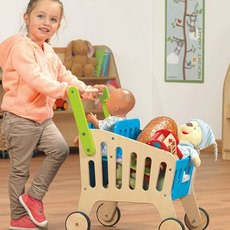
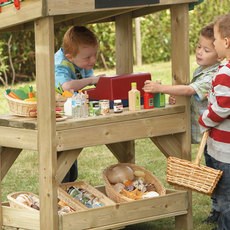 ON THE MARKET
ON THE MARKET
- Try the Role Play Metal Shopping Trolley, £49.95, from www.tts-group.co.uk. Other versions include the Shopping Trolley, £15.99, or the wooden Shopping Trolley, £52.05, along with a set of 10 Calico Shopping Bags, £23.99, all from www.earlyyears.co.uk. The wicker Shopping Basket Trolley, £35, will appeal to all the transporters in the setting, along with the six pack of Ellie Baskets, £12.99, also from www.cosydirect.com.
- For cash registers, try the Calculator Cash Register, £29.95, from www.tts-group.co.uk; or the Wooden Cash Register and Play Scales Set, £39.99, from www.reflectionsonlearning.co.uk. The set of six Writers Bumbags, £17.99, from www.cosydirect.com would be a great place to keep loose change while keeping hands free to pack.
- Create a shop front selling groceries, shoes, petrol or teddies. Clear the shelves or a table and let the children set out the stock or buy a ready-made shop counter like the Shop and Show Shelter, £199, or the Role Play Cupboard, £125, from www.cosydirect.com. Or go for the Toddler Market Stall, £123.99, from www.earlyyears.co.uk, or the Role Play Mobile Market Stall, £199.95, from www.tts-group.co.uk.
- Outdoors, invest in a role-play structure that will withstand the rigours of weather. Try the Outdoor Wooden Role Play Shop, £299.95, from www.tts-group.co.uk. Or create your own open-ended space with the Role Play Outdoor Shop, £195, from www.cosydirect.com. If you get your hands on some boxes, help children to create their own market stall.
- Choose resources that are easily recognisable so that children, particularly the under-threes, can immediately get involved and start playing with them. For example, collect empty food boxes for children to use in the home corner for shopping role play, cooking and playing cafés. For fruit and vegetables, if you don’t want to use the real thing, try the 21 pack of wooden Vegetables in Basket, £14.99, from www.cosydirect.com; the Wooden Role Play Fruit and Vegetables Set, £26.95, from www.tts-group.com; or the Fruit and Vegetable Box, £9.99, from www.earlyyears.co.uk.
ADDITIONAL RESOURCES
Older children might also like to play other types of shops, depending on their own experiences. For example, shoe shops, flower shops, hairdresser’s or bike shops. Add appropriate materials for different shops. For example:
- Set up a shoe shop with shoes; sandals; slippers; wellie boots of various sizes; flip-flops, lace-ups, Velcros; and have fun swapping shoes and looking at the numbers to see what size shoes people wear.
- Fruit and veg shop: provide real, wooden or plastic fruit and vegetables sorted into trays; scales; large paper bags; shopping baskets or trolleys; and encourage the children to weigh or count the fruit and vegetables.
- Set up a book shop providing a variety of books, comics, newspapers and magazines, and encourage children to browse through the materials and describe what they like or dislike about items before making a purchase.
- Hat shop: provide a range of hats including woolly hats, caps, rain hats, sun hats, dress hats, helmets and large mirrors.
- Clothes shop: select clothes of various types and sizes, and include a clothes rail; size charts; catalogues available for the children to look through or to cut out pictures to make poster displays for the shop.
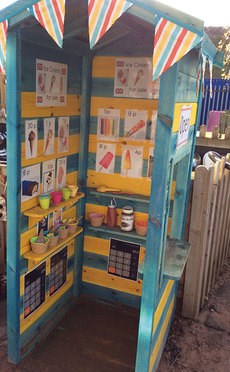
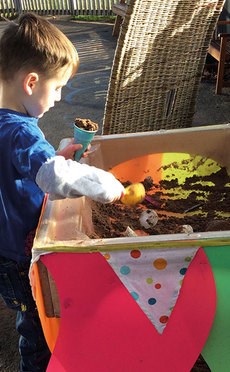
CASE STUDY: ALFRETON NURSERY SCHOOL
During the summer months, children at Alfreton Nursery School in Derbyshire set up a beach hut selling ice creams under the climbing frame in the garden area. The children enjoyed scooping up ice creams made of sand and water and dishing them out in plastic bowls and cones and serving them to staff and children.
But when the climbing frame was replaced with a new one, the staff decided to take the role play to a different level by commissioning a bespoke wooden beach hut to be built.
‘This is still going strong in mid-winter,’ explains nursery nurse Jane Blant. ‘The children were involved in it every step of the way. They decided on the colour and the bunting and they chose the images of the lollies and ice creams that they wanted to sell and printed them out on the computer. There was a lot of dialogue about prices and numbers and it stimulated a lot of discussion.
‘We bought plastic resources: ice cream cones, bowls and scoops and we added a plastic cash register. The hut is situated next to the sand and water tray and the children use the mixture to scoop into cones and bowls. They also decided that they wanted to sell pancakes, cakes and pies so we included squeezy sauce bottles for toppings.
‘This type of play is very sensory. They enjoy touching the sand and water and making the mixture different consistencies by adding water from the creek, which runs through the outdoor area.
‘They also use lots in schemas as they transport materials around the area and fill up the cones. It covers all areas of the EYFS. We sometimes take the iPad outdoors and put a seaside video on. It’s great for children’s language and communication and reinforcing manners and respectful language. We’ve linked it into stories like The Elephant and the Bad Baby, which is about a child who goes to the ice cream shop and doesn’t say please or thank you. Children often draw pictures and make things from recycled materials to go into the hut. And it’s also great for promoting British Values.’
The hut itself is also versatile and can change into something else, depending on where the children’s interests lie. Earlier in the year, it changed into a soup kitchen, where the chef served up the leek and potato soup that the children had made from the allotment.
Ms Blant says, ‘It may change after Christmas to a fish and chip shop, a Post Office or a puppet theatre. Whatever they decide, we have been happy with the way it satisfies children’s emotional well-being. As far as the practitioner goes, they observe how the play is going and use sensitive intervention techniques. Children like to invite them into their space to buy ice creams, but the adult will sense when to extend the play or take a step back.’
Download the PDF


